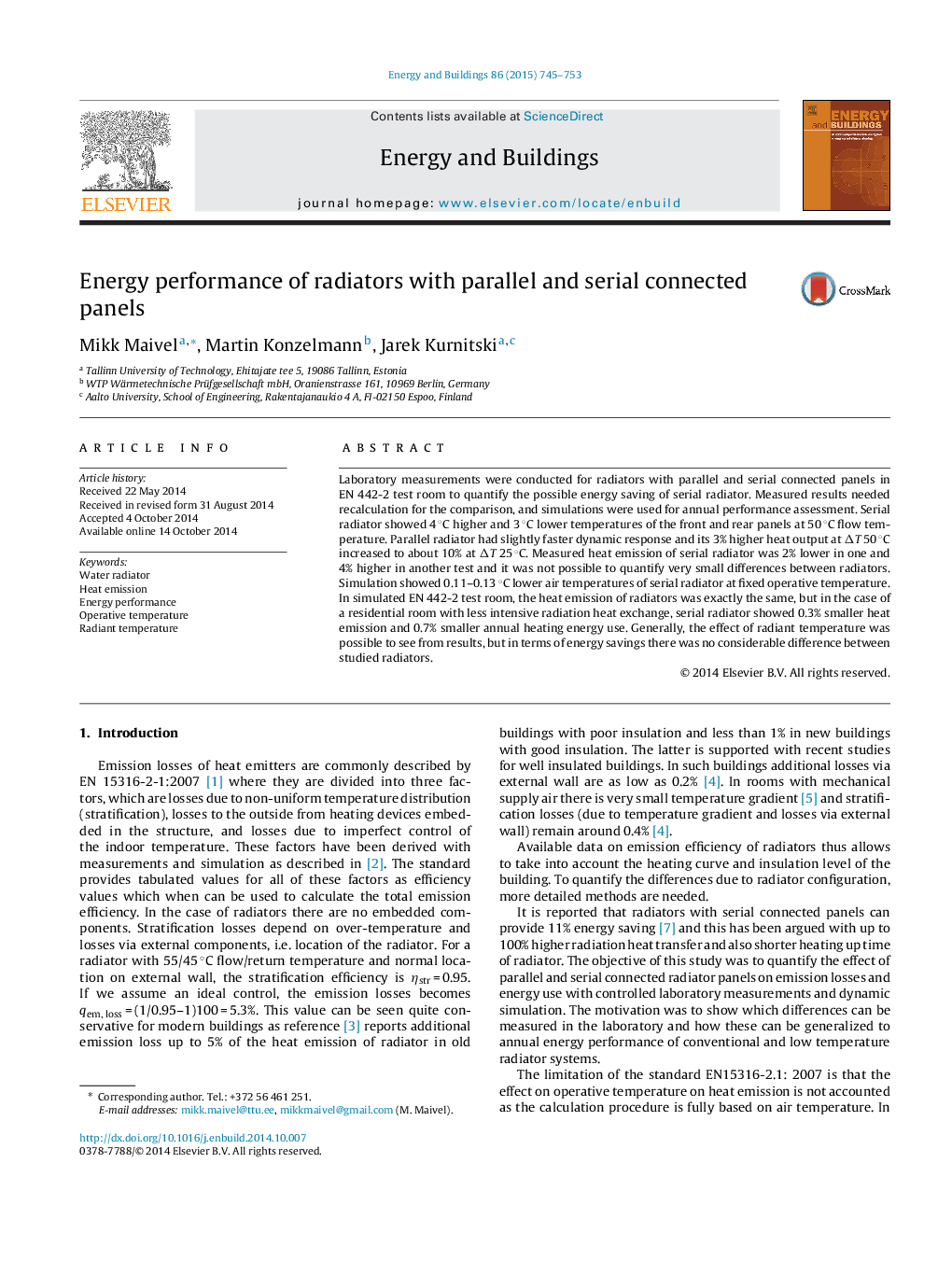| Article ID | Journal | Published Year | Pages | File Type |
|---|---|---|---|---|
| 6733025 | Energy and Buildings | 2015 | 9 Pages |
Abstract
Laboratory measurements were conducted for radiators with parallel and serial connected panels in EN 442-2 test room to quantify the possible energy saving of serial radiator. Measured results needed recalculation for the comparison, and simulations were used for annual performance assessment. Serial radiator showed 4 °C higher and 3 °C lower temperatures of the front and rear panels at 50 °C flow temperature. Parallel radiator had slightly faster dynamic response and its 3% higher heat output at ÎT 50 °C increased to about 10% at ÎT 25 °C. Measured heat emission of serial radiator was 2% lower in one and 4% higher in another test and it was not possible to quantify very small differences between radiators. Simulation showed 0.11-0.13 °C lower air temperatures of serial radiator at fixed operative temperature. In simulated EN 442-2 test room, the heat emission of radiators was exactly the same, but in the case of a residential room with less intensive radiation heat exchange, serial radiator showed 0.3% smaller heat emission and 0.7% smaller annual heating energy use. Generally, the effect of radiant temperature was possible to see from results, but in terms of energy savings there was no considerable difference between studied radiators.
Related Topics
Physical Sciences and Engineering
Energy
Renewable Energy, Sustainability and the Environment
Authors
Mikk Maivel, Martin Konzelmann, Jarek Kurnitski,
